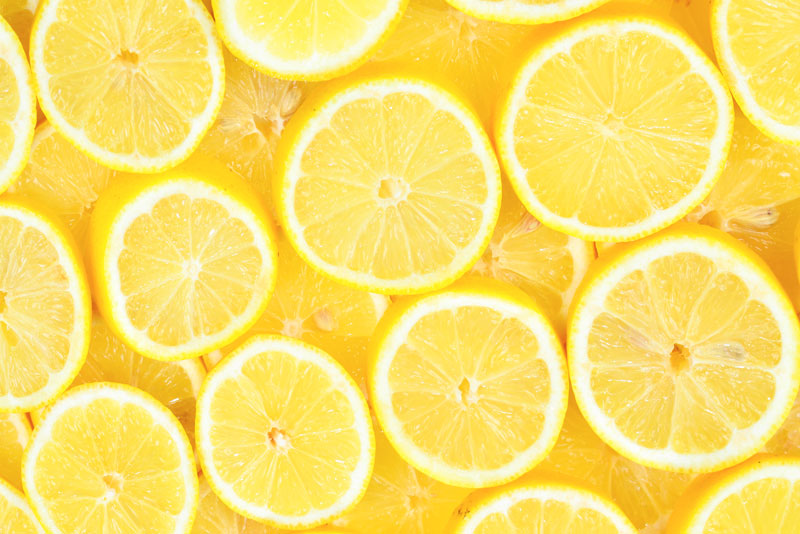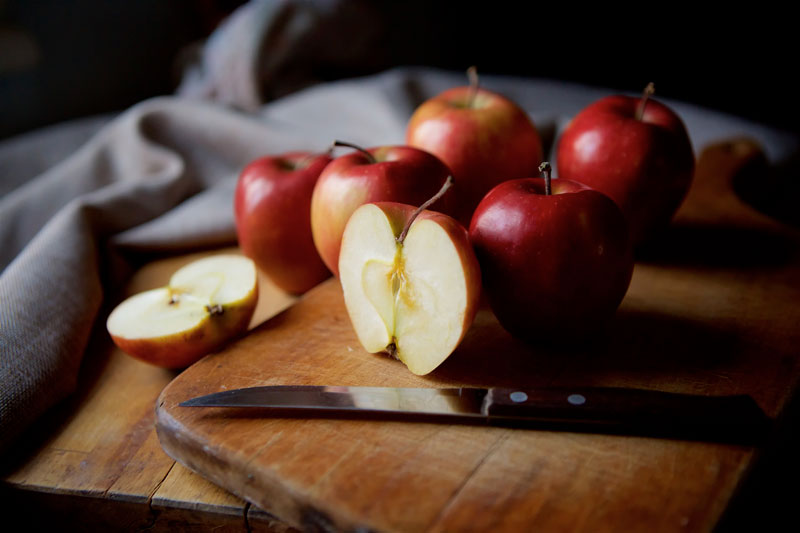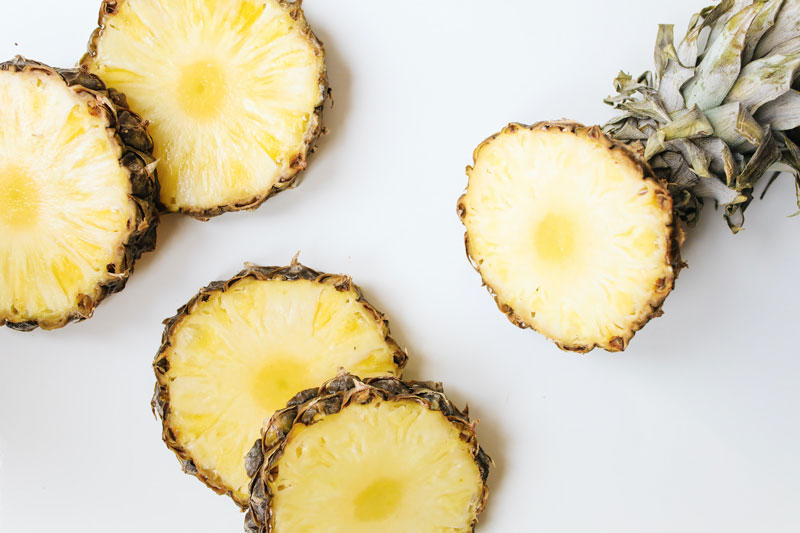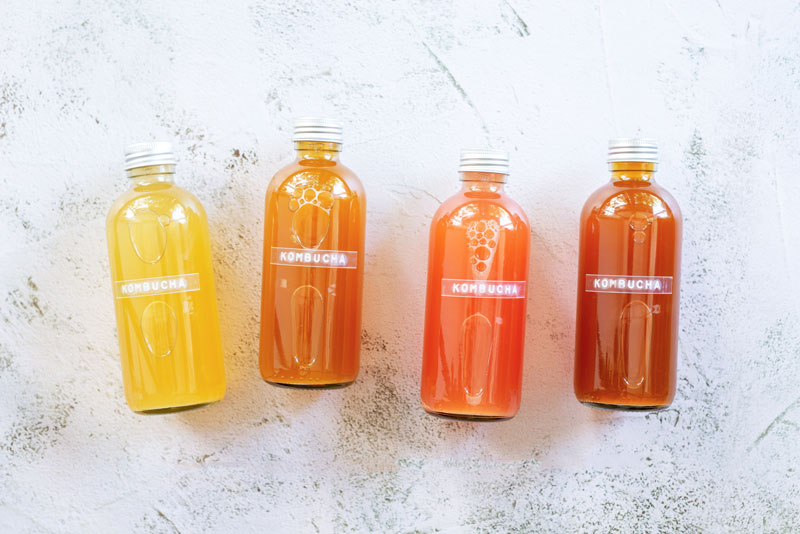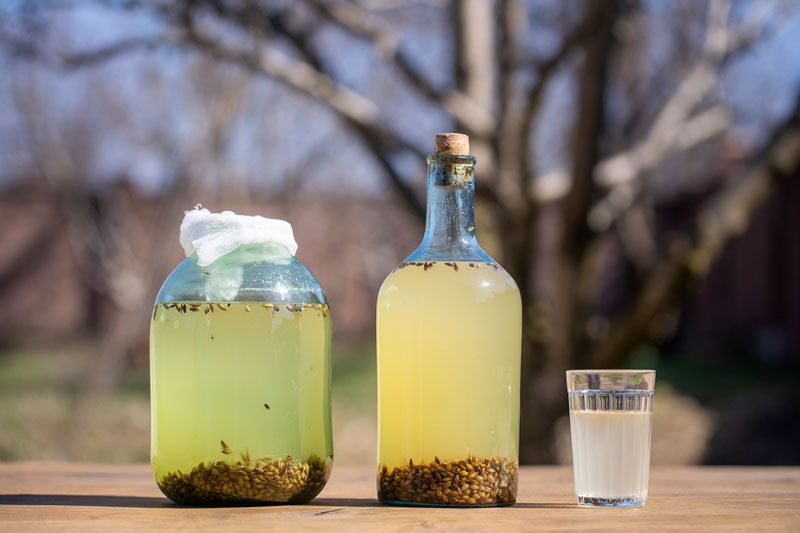Looking back on a fruit and vegetable juice craze, at the end of the day you wonder whether it’s really a good idea to sip these orchard fruits and garden vegetables all day long! Here’s the lowdown on these plant-based beverages with We Are Clean.
That well-known recommendation “5 a day” (servings of fruit and vegetables) has sunk in. We even thought we’d found THE solution by eagerly gulping down a big glass of mixed fruit juice every morning to load up on the vitamins, minerals, antioxidants and water that the body so badly needs. But then came the sometimes conflicting opinions of dietitians and nutritionists. Too high in sugar, not fibrous enough… But why should you drop something, if you used to love it so much?
Juices – full replenishment in no time?
It’s hard to fit two oranges, a kiwi fruit and a sprig of parsley into a glass. But once it’s all been put through the juicer, it’s technically possible! Extracting juice from fruit and vegetables, the cold-press way, makes it possible to retain all their nutrients. But what actual benefits are to be reaped from it? With the body being made up of more than 70% water, it’s vital to hydrate it daily. Juices that are themselves mainly made up of water (between 80 and 90%) guarantee optimal hydration.
But beyond that, it’s the nutrient intake that we’re interested in. A bit like a clone, juice has exactly the same properties as the fruit or vegetable from which it is extracted. Stripped of “matter” (of fibre, basically), it is easier to digest and is great for those with digestive disorders. Because liquids are assimilated more quickly than solids. But it’s precisely due to its lack of fibre that fruit or vegetable juice should be treated with caution.
We like juices because…
They’re good for you as far as health goes!
They have the same effects as fruit and vegetables, i.e. they are basifying, or alkalinising. Even if they have an acidic taste (like lemon), structurally they are still alkaline. In addition, they help to keep that acid-alkaline balance right, essential as it is to proper metabolic function. Juices temper the acidifying nature of red meat and fried foods, when drunk to wash them down.
They are high in antioxidants: those molecules that we hear so much about which prevent our cells from rusting and therefore ageing prematurely. Juices are packed with vitamins, and provide just the right quantity to meet the body’s daily needs. The same goes for minerals and enzymes: the stars of the orchard and vegetable garden make it possible to load up on them.
The starring fruits in juices
After cold-press juicing, fruit and vegetables retain all their nutritional value. Because juicers are the perfect solution, as they don’t cause a rise in temperature that would compromise some of their virtues. The following top the line-up:
Oranges and lemons:
They’ve always been the most hard-pressed! Their juices are high in vitamin C, nice to drink and energy-giving. They are high in flavonoids, and helpful in countering high cholesterol. While they have a proven pick-me-up effect, it’s also down to the idea of it, giving us that much-sought-after boost when we’ve barely even finished the glass. So is it autosuggestion as per the Coué method? To some extent, but it’s worth noting that through thought processes and visualisation, the brain starts secreting substances even before the nutrients ingested have had any beneficial physiological effects on it. So just looking at or thinking about a lemon makes your mouth water… And the digestion process starts!
The apple:
A super-antioxidant fruit, which counters high cholesterol, boosts the immune system and forms the basis of most mixed fruit juices.
The pineapple:
High in digestive enzymes, eases protein assimilation as well as playing a recognised antibacterial and antiviral role.
The tomato:
Though nice on its own, can also be combined with other fruit and vegetable juices to which it adds a touch of acidity and pep. It is full to bursting with pick-me-up power. This is because it’s high in vitamins and antioxidants, not least the lycopene that we hear so much about, which is popular due to its guarding against premature ageing of the eye area.
And are vegetables popular in juices?
You’ll find vegetables in juices, too:
The carrot:
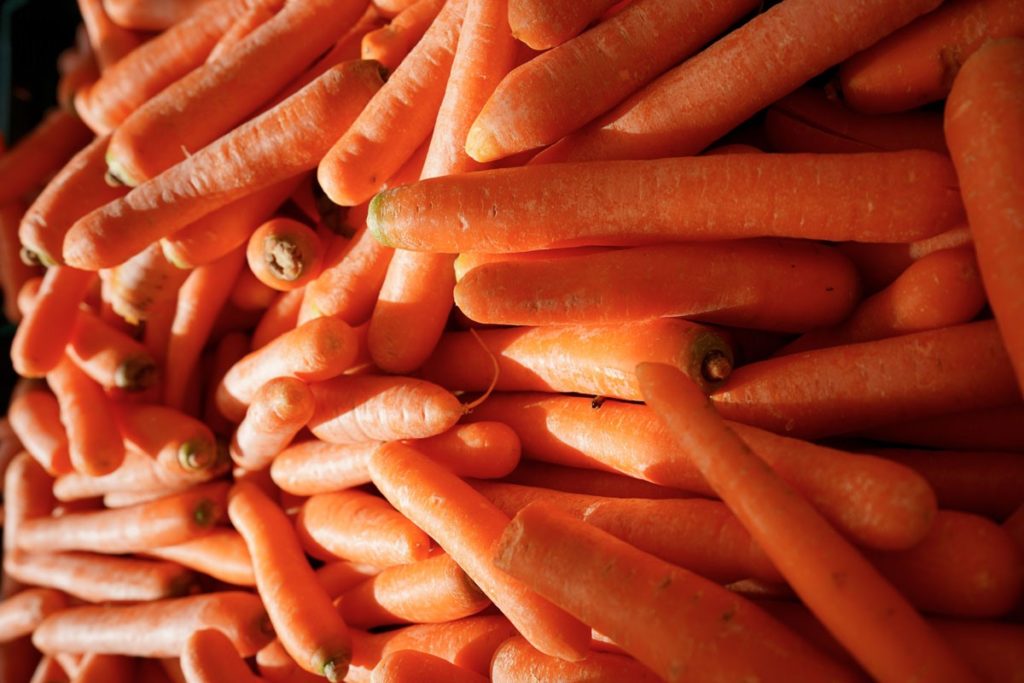
With its reputation of being a vegetable that gives you a healthy glow as it’s very high in beta-carotene, is as mild as it is sweet. It’s also credited with antiparasitic and antimicrobial virtues. The carrot likes to hang out with lots of types of fruit (apple, orange) and vegetables (beetroot, cabbage, parsley).
The cucumber:
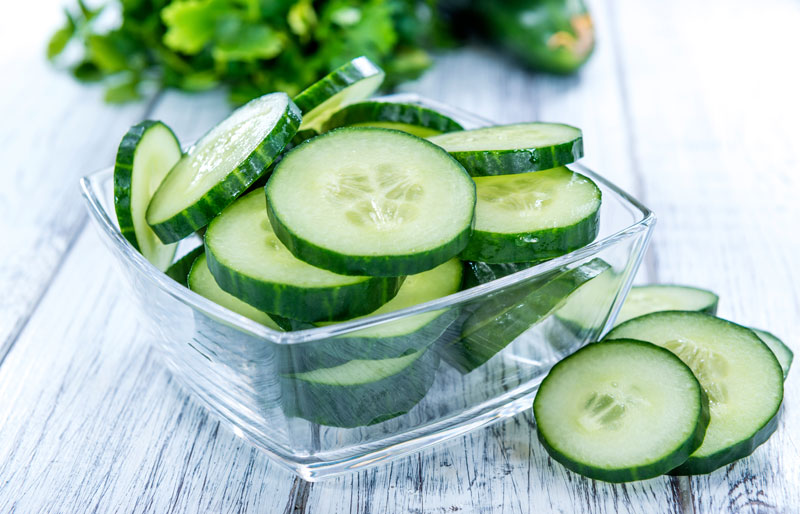
Very water-heavy, heads the star-studded vegetable juice line-up. As a base element, it goes well with all flavours. It’s an excellent slimming aid thanks to its hydrating and tissue-draining powers.
Celery:

Has long been popular with vegetable juice fans, alongside the tomato. It’s a champion among potassium sources. It regulates blood pressure and, thanks to its diuretic proprieties, boosts detoxification.
Beetroot:
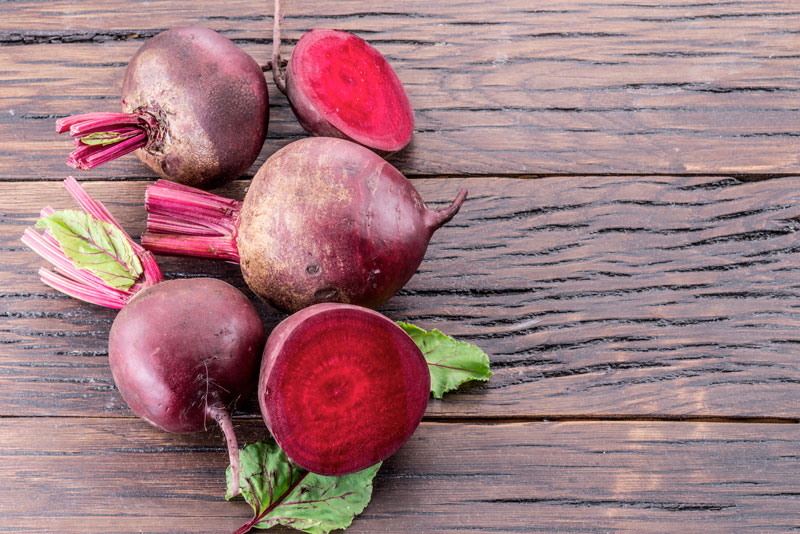
As its colour suggests, is a very powerful stimulant for those with anaemia. It also plays an anti-inflammatory role and can be combined perfectly with milder flavours like apple.
Cabbage has made it into juicers! We like it due to its digestive and detoxifying virtues, and more precisely its role as a stomach liner.
Broccoli:
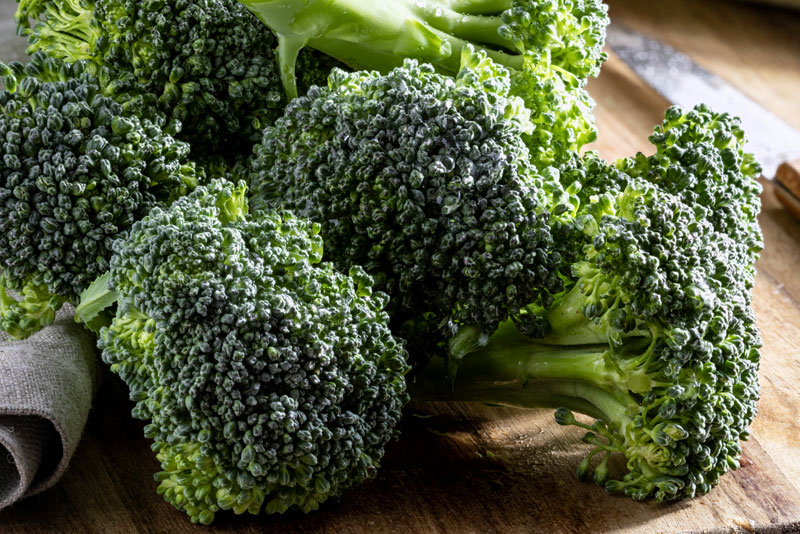
Which is high in vitamin C and antioxidants, and also in chlorophyll (like all green vegetables), is not to be overlooked as a juicing vegetable. Add it to fruit and vegetable blends.
The sweet potato:

Like the potato, is not considered “juicy”, but actually, once put through the juicer, it yields a mild, smooth juice. To be combined with any vegetable or fruit. In addition, its high vitamin C, copper and manganese content make it particularly beneficial.
Fresh herbs:
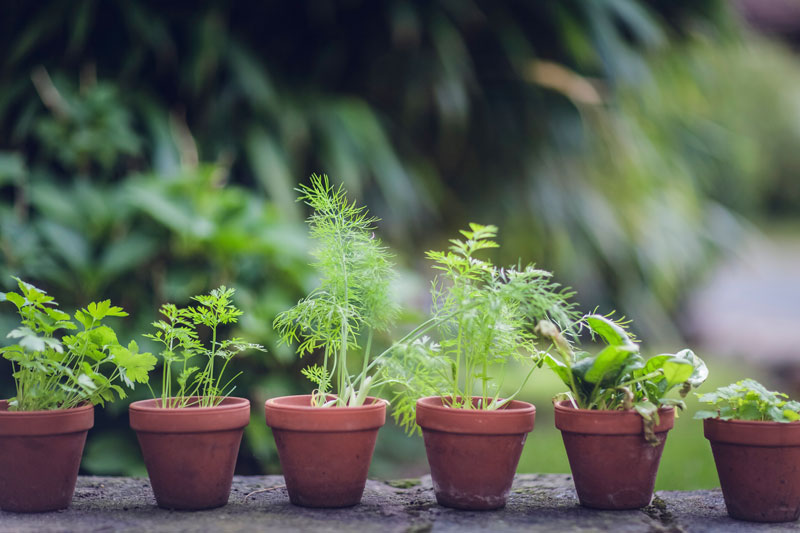
Like basil, coriander and parsley add a very distinctive flavour that enhances any juice combination. And also a beneficial amount of vitamin C, chlorophyll and minerals in just a few sprigs thrown in. So go right ahead and put a twist on your juices with these herbs!
Are juices false friends?
We like them, of course. They pack loads of vitamins into a single glass. But for some time now, they have been falling out of favour. Have we had too much of them? Has the fad for fruit and vegetable juice programs called time on the healthy juice trend?
Their main positive feature:
They make it possible to reach your “quota” of 5 portions per day much more quickly. But not without risks. A glass of juice amounts to around 150 ml of liquid. This equates to around twice the amount of fruit and vegetables (between 250 and 300 g), which equates to around half of the recommended daily intake.
Their other plus points?
Ces champions vitaminés s’associent très bien entre eux au point de réaliser des combinaisons These vitamin powerhouses can easily be teamed up, culminating in combinations that we would never otherwise have thought of putting together (broccoli/orange/cucumber/parsley/apple!). Those who find certain types of fibre harsh on the intestines find that juices and smoothies are a less painful way of getting their fruit and vegetables. Nonetheless, even those with less than robust intestines must not cut out dietary fibre. While it can have an irritant effect, it’s indispensable to optimal digestion.
What about fibre?
It ensures that carbohydrates get well assimilated, by slowing down digestion. It sends bad cholesterol levels plummeting, and act as a kind of fertiliser for intestinal flora. In addition, fibre that needs lots of chewing gives rise to a sensation of satiety, whereas juice alone does not. So after drinking a glass of juice you feel hungry, whereas you’ve just taken an amount of nutrients and calories on board that’s often equivalent to those contained in a light meal. Lastly, fibre mixes in with organic waste, sweeping it along for it to be expelled in the stools.
Juices, sure, but not any old how!
To combine pleasure with healthy habits, don’t drop juices. Learn to drink them at the right time in appropriate amounts.
- Don’t drink juice on an empty stomach. Because the large amount of sugar contained in it goes directly into the system with no fibre attached to slow the process down. Drinking a big glass of fruit juice on an empty stomach is like getting intravenous sugar on a drip! In response, the body secretes insulin to “deal with” the surfeit of sugar, and a few hours later hypoglycaemia kicks in. Moreover, a larger amount of sugar gets stored in the cells. Over time it’s guaranteed to lead to weight gain, as well as an increased risk of developing diabetes and related ailments, not least cardiovascular disorders.
- Don’t drink more than one glass of fruit juice per day. Also, if it’s at breakfast time, always start with a glass of water to gently wake up the digestive system (best of all: a glass of warm water, as close to body temperature as possible). Keep in mind that fruit juice is food and not water, water being an indispensable cell messenger.
- A glass of juice, even mixed fruit juice, and even squeezed at home, does not take the place of a portion of vegetables with every meal.
- Always combine fruit and vegetable juices, with 2 portions of vegetables and one of fruit.
- The right time is the time when you would eat a raw appetiser (at the beginning of a meal), a piece of fruit (for dessert) or an afternoon snack.
Freshly or ready-squeezed – are they the same thing?
No… Because ready-squeezed juices, even organic ones, are pasteurised to rid them of bacteria (or minimise the chances of them harbouring bacteria once opened). But pasteurisation means heating juice to a high temperature, at the expense of the nutrients and vitamins. The other major drawback of mass-produced juices is their added salt and sugar content. The calorie count is often high!
Kefir, kombucha, kvass – are they OK?
These are beverages made from fermented fruit and vegetables. The fermentation is what makes them so beneficial. High in natural probiotics, these drinks (especially if homemade) protect and sustain intestinal flora.
- Kefir is a slightly acidic fizzy drink, made through the fermentation of whey (from cows’ or ewe’ milk) with kefir-grain yeast.
- Kombucha is a beverage based on green or black tea to which yeast, sugar or honey, fruit or flavourings are added. Kombucha becomes fizzy and enriched with the beneficial yeasts that develop during the fermentation process.
- Kvass (the most common version being made from beetroot) is a fermented, fizzy, slightly alcoholic drink (less than de 1.2%) made from rye bread, beetroot or fruit like raisins or strawberries. It’s used in some eastern European countries (particularly in Ukraine) as a base for soups or sauces. In summer, street vendors also sell it as a cold drink.
And water?
If there’s one beverage that you will never be advised against drinking, water is it. Valued as much for what it provides as what it takes away, water is the ultimate cell fuel, the body’s protector (it behaves like airbags surrounding and protecting most of our organs). In addition, it carries messages from one cell to another. Hence the need for the message to be pure and sugar free. Always favour water with a low dry residue (and therefore low mineral) content. It may be less beneficial nutritionally, but it’s also less taxing for the kidneys. It reinforces their major role as an emunctory and therefore a waste disposal system.
In conclusion: Yes, (homemade) fruit juice is healthy and clean.
In summer more than at any other time, it’s delectable to squeeze your own vitamin-rich juice.
But drinking it every day, several times a day – like you would water, tea or infusions – is a no-no. Thirst shows up, as it happens, when we haven’t drunk enough water. To quench it, forget fruit juice (or fruit & vegetable juice). Save them as a treat during a moment’s break. Lastly, if you have a juicer and immediately think of squeezing your own fruit rather than vegetable juice, combine the two as a matter of course. Together they make for a better acid-alkaline balance than pure fruit juice.
And one last clever tip: if drinking water is not yet a habit of yours, set a ‘drink glass of water’ alarm to go off every hour between breakfast and dinner (outside of mealtimes). When you drink water that frequently, it will become second nature. And at that point you will be able to view fruit and vegetable juice concoctions as real rewards!




